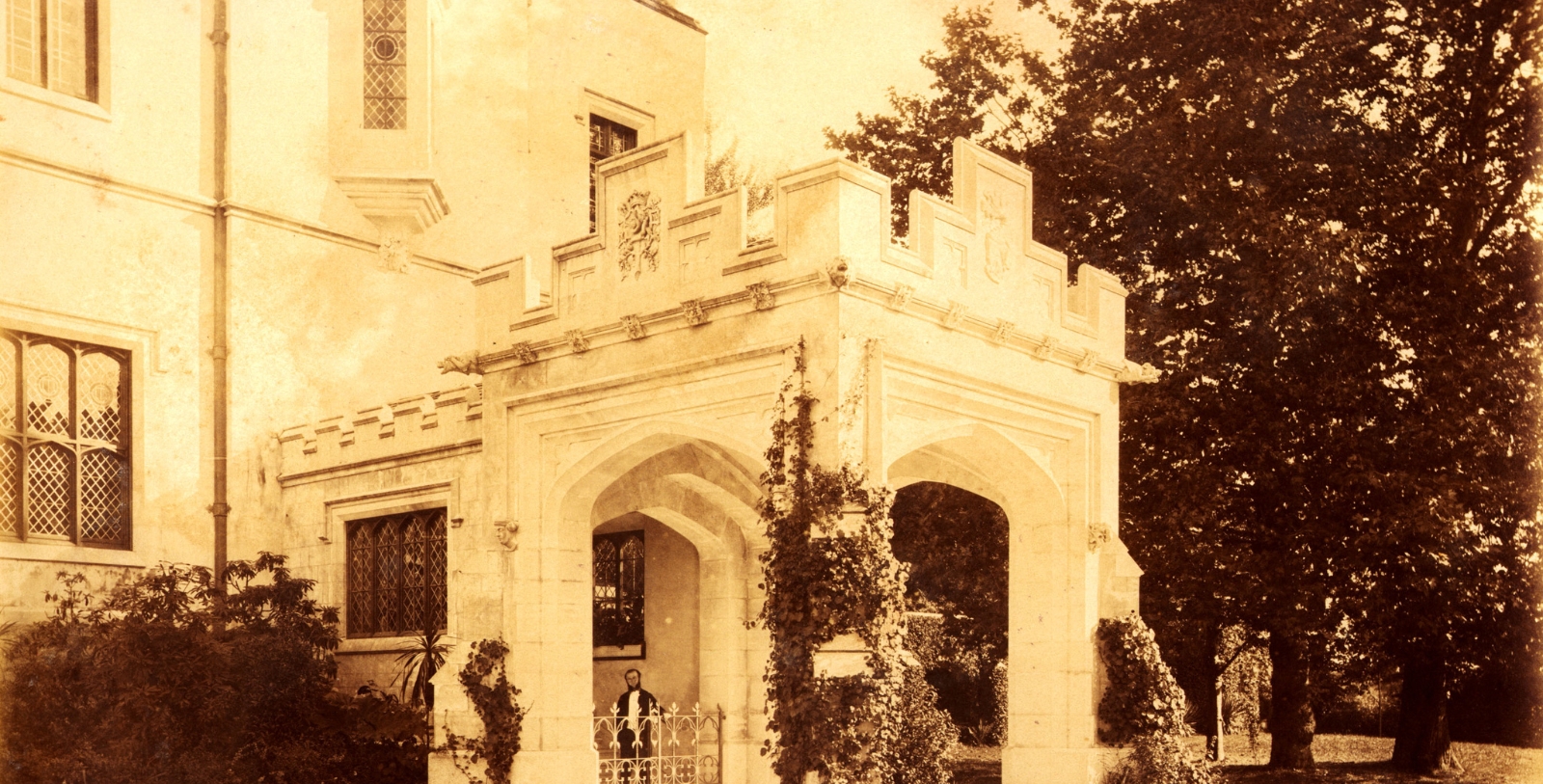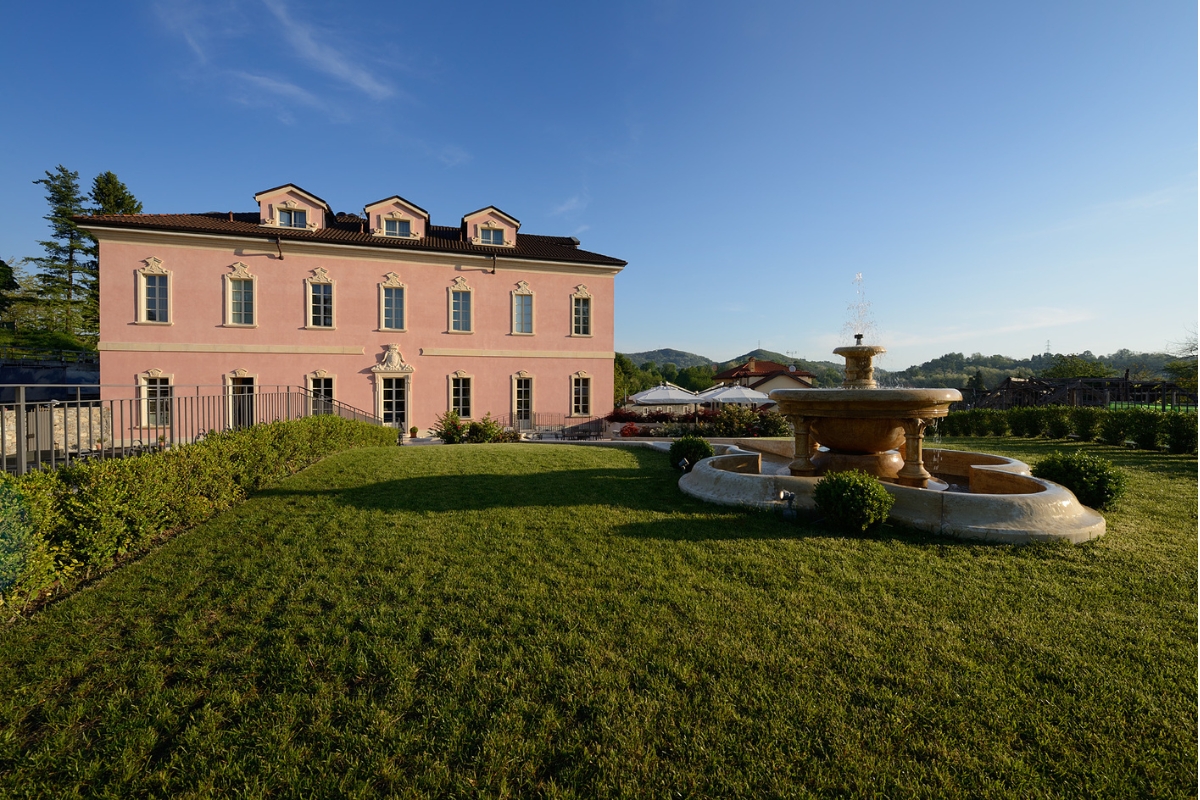Receive for Free - Discover & Explore eNewsletter monthly with advance notice of special offers, packages, and insider savings from 10% - 30% off Best Available Rates at selected hotels.
history
Learn about centuries of intrigue in Italy’s historic noble families, including the Visconti family who built the resort and became one of the largest feudal landholders in the Middle Ages. The site would change hands before housing local families and students during the twentieth century.
Castello Dal Pozzo Resort Lago Maggiore, a member of Historic Hotels Worldwide since 2023, dates back to the 1000s.
VIEW TIMELINEDating back centuries, Castello Dal Pozzo Resort Lago Maggiore was once an impressive estate for a prominent Italian family known as the Visconti. The Visconti originally hailed from the affluent city of Milan, where they had spent generations participating in the local government. Their skill navigating the tense political landscape gave them a small fortune, which enabled members of the family to steadily acquire land well beyond the city limits. One branch of the Visconti family relocated to the village of Oleggio near the majestic shoreline of Lake Maggiore during the early 11th century. Selecting the site of a former Roman fort (or “castrum”), this distinctive group of Visconti family members proceeded to construct an imposing castle referred to as the “Oleggio Castello.” The entire Visconti clan remained members of the minor Italian nobility until Archbishop Ottone Visconti seized control of Milan from the rival Della Torre family in the mid-1200s. From there, the Visconti experienced a meteoric rise in power, conquering numerous other fiefdoms throughout northern Italy. Indeed, the Visconti became one of the largest feudal landholders by the height of the European Middle Ages, going on to reorganize their expansive territory as the Duchy of Milan. Great prestige was awarded to the whole Visconti family, granting them access to beneficial marriage alliances with powerful monarchs in England, France, and Germany.
Their influence gave them access to considerable sums of wealth, which they in turn used to transform Milan into a major center for the arts and sciences. Despite their significant prominence though, the might of the Visconti eventually began to wane following the death of the heirless Filippo Maria Visconti in 1447. War then erupted between the various claimants to the Visconti riches, with the son-in-law of the late Filippo, Francesco Sforza, emerging as the victor. While the rest of the Duchy of Milan flourished under the rule of Sforza and his descendants, the Oleggio Castello was left abandoned and gradually fell into a state of disrepair. Fortunately for the structure, distant relatives of the main Visconti line inherited the castle a few decades later. Initiating an extensive renovation, the family members went about redeveloping the compound to resemble a royal palace rather than a military bastion. Now matching the most extravagant palaces in Europe, the beautifully revitalized Oleggio Castello remained a part of the Visconti lineage for many years thereafter before finally passing over to the Dal Pozzo family by way of marriage. The Dal Pozzos showed the castle the same affection that their predecessors had demonstrated, taking great pains to protect its majestic character.
Claudio Dal Pozzo oversaw a comprehensive renovation that brilliantly redesigned the facility’s layout. Beginning in the mid-19th century, the work sought to recapture the prominent medieval aesthetics that once defined its original appearance. Claudio specifically drew inspiration from respected Neo-Gothic architects like Augustus Pugin and William Burges, mimicking their schematics as a way of ensuring the castle’s architectural integrity was recaptured as closely as possible. But Dal Pozzo’s deep fascination with British Victorian culture meant that art forms popular in Great Britain at the time had appeared in his designs, namely the use of Tudor Revival-style motifs. (His appreciation for such design concepts led him to create an expertly manicured garden as well, which wrapped around the castle .) Oleggio Castello’s reimaged façade conveyed a masterful blend of historic architectural forms that ultimately made it one of the best country estates in Italy. Still under the care of the Dal Pozzo family today, this magnificent historic landmark currently operates as a luxurious five-star retreat known as “Castello Dal Pozzo Resort Lago Maggiore.” Cultural heritage travelers have enjoyed visiting the complex, given the incredible efforts of the Dal Pozzo family to preserve the site’s fascinating history. Few other places are truly better suited for a memorable vacation experience than the Castello Dal Pozzo Resort.
-
About the Location +
However, the newfound affluence of Milan made it the target of new enemies, such as other Italian city states like Pavia, Cremona, and Lodi. Overcoming their rivals, the Milanese proceeded to incorporate those defeated neighbors into an ever-expanding domain that covered much of present-day northern Italy. To combat the mounting threats facing Milan, the once dominant archbishopric was forced to cede an increasing number of its responsibilities to an emerging aristocracy of wealthy burghers. Among the most influential merchant families to dominate Milanese politics were the Della Torre and the Visconti, who soon vied fiercely for control over Milan. Lasting for decades, their feud finally reached its climax with the demise of Della Torre at the Battle of Desio in 1277. Now the uncontested leaders of the newly created Duchy of Milan, the Visconti subsequently oversaw an even greater period of cultural and economic affluence for the city. But an enterprising mercenary named Francesco Sforza soon challenged the Visconti for the Duchy of Milan, claiming his right to the throne by way of marriage. Milan. Occupying the city, Sforza inaugurated his own dynasty as the new rulers of Milan. The community remained an important cultural bastion in Europe though, specifically emerging as a major player in the Italian Renaissance .One of the greatest minds of the Renaissance to take up residence in Milan was the legendary Leonardo da Vinci, who created significant masterpieces while living on-site, like The Last Supper, the Virgin of the Rocks, and the scientific drawings included within his Codex Atlanticus.
Milan’s fortunes went on to fluctuate with the tides of European power struggles, falling under French, Spanish, and Austrian governance for several centuries. Despite these changes, Milan endured as a beacon of innovation and culture, seeing the debut of such renowned institutions as the Teatro alla Scala. Then during the 19th century, Milan and its residents were monumental toward galvanizing the Italian Risorgimento, specifically contributing resources and labor to the eventual creation of a unified Italy in 1861. The simultaneous spread of the Industrial Revolution further transformed Milan, making it Italy’s main manufacturing powerhouse. The city’s skyline began to change with new buildings and infrastructure reflecting its modern rebirth. Although the city was affected by World War II a century later, it is still one of the most prosperous European metropolises. Milan currently serves as the host to world-renowned facilities like the Politecnico di Milano and the Bocconi University, as well as the many prominent companies that reside within the historic Porta Nuova district. The city’s commitment to the arts has remained just as strong, as best epitomized by the famed Milan Fashion Week festival it has hosted since the 1950s. The community is the site of globally significant historic landmarks, including the UNESCO-recognized Santa Maria delle Grazie church, which is presently the home of Leonardo da Vinci’s The Last Supper painting.
-
About the Architecture +
When the Marquess Claudio Dal Pozzo inherited the estate, he transformed the accompanying castle to highlight a beautiful blend of Gothic Revival-style motifs. Gothic Revival-style architecture was born from the Romanticism that swept through Europe in the middle of the 19th century. This demarcated a distinctive break from the Neoclassicism of the century prior, which drew its architectural inspiration from the Greco-Roman civilizations of antiquity. The desire for the medieval design principles of Gothic Revival architecture reflected a broader trend within Western societies—particularly in Europe—to preserve the past in a meaningful way. Architects thus took to preserving the surviving buildings from the period, while also creating new ones that mirrored the aesthetic. The most common structural elements incorporated into buildings developed with Gothic Revival style was the pointed arch. This profound feature manifested around windows, doors, and rooftop gables. It influenced the development of entire substructures, leading to the creation of such features as mock parapets, conical towers, and high spires. Other characteristics associated with Gothic Revival-style architecture included a special kind of wooden trimming known as either “vergeboards” or “bargeboards.” Porches also featured turned posts or slender columns, while the roof was often deeply pitched and lined with dormers. Architects typically used this style for rural buildings set within a historic village or town, although some in the field chose it for commercial structures. Contemporary churches came to highlight Gothic Revival style , as their natural layout was well-suited to show the best of the form.
Given the Marquess’ deep appreciation for English—and greater British—art, he infused many rich elements of Tudor Revival designs throughout the revitalized Oleggio Castello. Tudor Revival architecture is best defined as an eclectic mixture of late medieval building traditions that influenced the appearance of English villages during the Middle Ages. The form specifically attempted to emulate the historical character of the feudal cottage that once dominated England’s landscape. The name “Tudor” is somewhat of a misnomer though, for the design aesthetic did not borrow any of its principles from buildings constructed during the reign of the 16th-century Tudor monarchs. Nevertheless, buildings constructed with Tudor Revival-style architecture were typically identified by their half-timbering. “Half-timbering” is the practice of constructing a series of interlocking load-bearing timber frames that were then filled with some kind of plaster mold. The architects left the frame exposed, creating a distinctive appearance. Another common characteristic of Tudor Revival-themed buildings was the presence of a steeply pitched roof that usually featured heavy shingles. This area of the structure was often lined with overhanging gables, as well as eaves and diamond-shaped casement windows. In many cases, the architects endeavored to make the roof appear as if it had been thatched. A round arched doorway guided guests into the interior, which featured an irregular floor plan. The use of such a layout was normal inside late medieval English homes, as it usually took several generations to build. Modern architects attempted to recapture that ambiance whenever they set about creating the blueprints for Tudor Revival-style buildings.


























